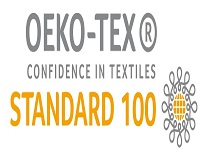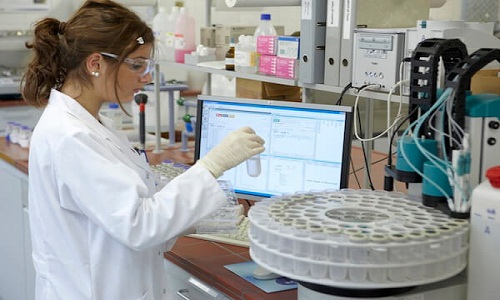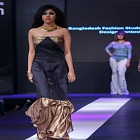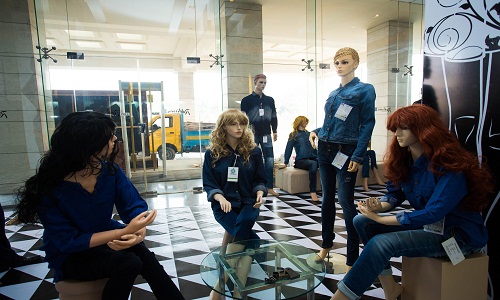FW
Export earnings of Sri Lanka from its textile and garment sector have declined for the third consecutive month. December 2015 exports fell by 12.8 per cent. Overall exports declined by 18.7 per cent, year-on-year. This figure is mostly a reflection of Lanka’s low exports to both the EU and US markets.
Export earnings of Sri Lanka from its textile and garment sector contribute nearly 48 per cent to its total export revenue.
Garment exports to non-traditional markets like Canada, China and UAE have, however, increased by 1.7 per cent, year-on-year, during the month. The overall trade performance for the year 2015 decreased by 5.6 per cent owing to subdued global demand and lower commodity prices.
The leading markets for merchandise exports of Sri Lanka during 2015 continued to be the US, UK, India, Germany and Italy, accounting for about 51 per cent of total exports.
Sri Lanka’s export earnings, as a percentage of GDP, have been falling for years. Exporters blame growing energy costs and the strengthening rupee, making their products expensive in the global market.
Greater regional integration will help Sri Lanka capitalise on Asia’s growth while product diversification and sophistication would give scope and lift market share.
"In 2018, the Oeko-Tex Association aims to provide further targeted support on issues relating to consumer protection and sustainability throughout the textile value creation chain. The new regulations will come into effect on April 1, 2018 for all certification systems and other services, following a three-month transition period. The Oeko-Tex Association presents the new product regulations in detail to interested companies during a webinar on January 30, 2018."

In 2018, the Oeko-Tex Association aims to provide further targeted support on issues relating to consumer protection and sustainability throughout the textile value creation chain. The new regulations will come into effect on April 1, 2018 for all certification systems and other services, following a three-month transition period. The Oeko-Tex Association presents the new product regulations in detail to interested companies during a webinar on January 30, 2018.

The updates of Oeko-Tex standards and guidelines are based on the continuous exchange of experience with industry stakeholders, cooperation with initiatives and monitoring of legal regulations. The work of Oeko-Tex expert groups thus takes into account current scientific innovations and knowledge as well as latest market developments. Some of the amendments made are as follows:
Detox to zero
Thanks to the comparability of the Detox To Zero MRSL with the valid MRSL for the STeP by Oeko-Tex certification, detox to zero can be fully integrated into STeP. The customers can convert to STeP at any time. The restructuring of the DETOX TO ZERO assessment tool and status report improves usability and clarity.
Eco passport
The zero discharge of hazardous chemicals (ZDHC) initiative accepts the Eco Passport By Oeko-Tex as an indicator of conformity with their MRSL (harmful substance exclusion list for textile production). Upon approval, companies can have their products certified by eco passport listed in the Oeko-Tex Buying Guide and if they wish from now on also in the ZDHC Chemical Gateway. Bisphenol A is among the new substances to be recorded by eco passport. Other new included substances are additional alkylphenols (pentyl- and heptylphenol) and the aromatic amine aniline. You can now list up to five products from different categories on an eco passport certificate. Previously, an individual certificate had to be issued for every product category. Additionally, now not only manufacturers of chemicals receive an eco passport certificate for their products, but also retailers and importers of chemicals distributed by them can certify their chemicals under certain conditions. From 2018, chemical manufacturers are no longer obligated to disclose secret formulas. In such cases, however, more extensive analytical testing is required to obtain an eco passport certificate.
Leather standard
Bisphenol A, the aromatic amine aniline and other alkylphenols (pentyl- and heptylphenol) are now recorded as part of the leather standard.
Made in Green
The minimum requirements and criteria for awarding the Made In Green product label have been updated. There is an improved comprehensibility and less time for label attainment.
Standard 100
The newly recorded harmful substances in the Standard 100 criteria catalogue are phenol, bisphenol A, the aromatic amine aniline as well as the additional alkylphenols, pentyl- and heptylphenol. The Oeko-Tex Association would now place the substance quinoline under observation. Amended limit values also apply for short-chain chlorinated paraffins (SCCP) and ortho-phenylphenol (OPP). Oeko-Tex plans to integrate the testing of organic cotton products for genetically modified organisms (GMO) into Standard 100.
STeP
The scope of STeP assessments for the survey of required company data is significantly reduced by condensing the questionnaire. The integration of detox to zero allows now to issue the STeP certificate and the status report additional with information on detox to zero.
Bangladesh’s export earnings posted a nearly nine per cent growth in the first eight months of the current fiscal year.
In the month from July the country’s earnings from exports were 8.92 per cent higher compared to a year ago. Earnings by the readymade garment sector, the major industry, increased 9.52 per cent from a year earlier.
In February, apparel exports increased by 12.29 per cent. In February exports registered a 13.60 per cent growth from the same month last year. The figure exceeded the target by 4.90 per cent.
The woven sector exported products to receive 9.48 billion dollars and export of knitwear products earned 8.64 billion dollars. Supply to destination countries as per orders helped the country achieve the export growth. Production capacity of manufacturers has been increased while there has been ample work orders from retailers.
Improvement of safety standards in the readymade garment sector, the peaceful political situation and new markets are contributing to getting a higher number of work orders from retailers.
However, the unit price has fallen, which is a matter of concern for the sector.The country’s apparel sector needs a eleven per cent growth to reach the 50 billion dollar export target by 2021.
"Denimsandjeans.com, a website dedicated to the world denim industry since 2007, organised the two-day show in association with the Dhaka Chamber of Commerce and Industry, the Bangladesh Textile Mills Association, and German state agency GIZ. Denim makers from Bangladesh and India, Pakistan, Switzerland, the United Arab Emirates, China, Indonesia, Brazil, and Turkey participated."

Riding on the success of denim show ‘Denim in Fashion Dhaka’ organized by Denimsandjeans.com, Bangladesh has called for foreign investment in denim industry. The country is increasingly becoming a destination for denim business because of its well-established ability to supply huge volumes at comparatively lower prices. International Affairs Adviser to the Bangladesh Prime Minister Gowher Rizvi urged foreign denim manufacturers to invest in Bangladesh’s denim sector as huge opportunities lied with the demand rising. Gowher was addressing as the chief guest at the inauguration of the two-day Denimsandjeans.com Bangladesh show in Dhaka recently.
Gowher said as China was shifting its business from clothing to high-end industry, Bangladesh could take the chance to become the world’s largest supplier of clothing products. He added that the country has made lots of investment in power and infrastructure. “So, foreign investors can come up with your investment here in manufacturing industry. Bangladesh now exports denim products of $2bn annually. The figure will increase and the country wants to raise our 2021 RMG export target.”
Huge potential for denim

At the event, Dhaka Chamber of Commerce and Industry (DCCI) Acting President Humayun Rashid said Bangladesh should be considered as a place of investment, not a source of import only. Envoy Textile Assistant General Manager (marketing) Rizwanul Karim opined the expo was a platform to inform global consumers as well as the buyers about the capacity of Bangladesh denim industry.
Square Denim deputy manager Muhammad Zakir Hossain opined, since the denim industry is an emerging sub-sector of the RMG industry, the government should offer special policy support on import chemical, an essential ingredient of the products. He said since manpower was available in the country, investment could produce good returns. Nandan Denim director D K Jain explained that Bangladesh is a highly potential country, as it supplies products to the European and to US market.
Strong sourcing destination

Meanwhile, Thomas Dislich, head of Europe and Asia region for Vicunha, the world's largest denim maker expressed his desire to invest in Bangladesh. Denim has a huge potential in Bangladesh given its strong footprint in the global apparel market and reliance on imports to meet 60 per cent of its demand. Bangladesh will remain an unavoidable sourcing destination for jeans for the next one decade at least. There is so much capacity in the country, Dislich observed and added that the demand for denim products are growing around the world by leaps and bounds. Globally, there is demand for a pair of pants per inhabitant every year.
Plus, denim is being used from shoes to caps and in cars and furniture. He went on to praise Bangladesh's recent improvements in the denim sector. Bangladesh is evolving from purely cheap products to diversified products. A lot of new products are coming up. Still, the country will have to make the most of the talent it has.
Sabina Chandrakant Ingale, sourcing head of Bershka, which is part of the Spanish Inditex group said that Bangladesh's denim industry has improved a lot in the last three to four years. She mentioned that 80 per cent of Bershka's denim comes from Bangladesh, with plans to increase sourcing by another 25 per cent over the next two years.
The global denim market is worth $60 billion, according to Sandeep Agarwal, founder of Denimsandjeans.com. Apart from selling denim fabrics directly to Bangladeshi exporters, about 20 manufacturers also sell the fiber to foreign producers directly.
Denimsandjeans.com, a website dedicated to the world denim industry since 2007, organised the two-day show in association with the Dhaka Chamber of Commerce and Industry, the Bangladesh Textile Mills Association, and German state agency GIZ. Denim makers from Bangladesh and India, Pakistan, Switzerland, the United Arab Emirates, China, Indonesia, Brazil, and Turkey participated. ‘Denim in Fashion Dhaka’ event displayed jeans and denim products along with fabrics to local and foreign jeans manufacturers.
Sales for US fashion group Urban Outfitters during the third quarter of the 2017-18 fiscal year were valued at $892.8 million (€761 million), as against to $862.5 million last year, equivalent to a 3.5 per cent rise on a yearly basis. It was a record quarterly result which surprised financial analysts who predicted a revenue of $861 million for the quarter ending on 31st October. The positive performance was driven by comp sales growth generated by the group's Free People (+5 per cent) and Anthropologie (+2 per cent) labels, though the group's leading brand, Urban Outfitters, was on the up too (+1 per cent). As for the group's net income, it fell slightly, down to $45.1 million, as against the $47.4 million produced the year ago period.
Frank Conforti, the group's CFO was reported to have exulted, "The store’s traffic improved in the quarter, thanks to a strong increase in the European market." However, analysts were told that retail sales for Urban Outfitters stores in North America were declining.
The group manages 616 stores, the majority of them located in North America. In Europe, it currently operates 57 stores, of which 46 with the Urban Outfitters brand and 11 with Anthropologie. The group's labels are all still planning to expand in Europe. Real estate specialists Knight Frank notes that Urban Outfitters will open its first Parisian flagship store in rue de Rivoli and is targeting to open its first store in Italy, in Milan, shortly.
Also Free People is broadening its European footprint. Sheila Harrington, the women’s wear label's President, said that a wholesale distribution deal has been struck with a French
distributor along with similar agreements for Italy and Spain are also expected to be signed in the fourth quarter. In the third quarter, Free People's international revenue rose by 26 per cent largely due to the wholesale channel and the e-tail business.
Kornit Digital is a worldwide market leader in digital textile printing technology. The company is ready to launch a new industrial-grade direct-to-garment printing systems. These systems emphasise the company’s policy of a one-step multi-fabric process without pre-treatment using Neo Pigment pure ink.
As the textile printing market moves toward online business models and fast fashion, customers are requesting powerful industrial systems in flexible configurations. The new systems have been designed for higher effective throughput and an even more attractive ROI while offering first-class print quality and process efficiency.
The Avalanche 1000 is considered Kornit’s flagship model. Its 24 spectra polaris heads, together with all other Avalanche efficiency features, make it the productivity configuration of the Avalanche platform which is also available in a six-color and in a digital discharge version.
Kornit Digital’s patented Neo Pigment printing process features one-step printing with inline pretreatment, compatibility with a variety of fabrics and outstanding print quality. Kornit is a full solution provider that also produces its own Neo Pigment Pure and Intenso ink series, as well as software and workflow solutions, complemented by an international service and support network.
High quality samples can be produced on Kornit’s systems, be it garments made from a variety of fabrics or Allegro prints that can be turned into home textile or fashion examples.
www.kornit.com/
Myanmar and Bangladesh may work together in fighting global business challenges. Bangladesh is looking for a gateway to southeast Asia through Myanmar. After decades of sanctions, Myanmar has recently been opened to businesses. Currently the country has around 400 garment factories that employ between 3,50,000 and 4,00,000 workers. Bangladesh’s nearly 3,500 factories employ about four million workers.
Myanmar exports apparels worth $1.8 billion and it has set a $10 billion target for the next 10 years. Bangladesh too aims to double current exports worth $50 billion dollars by 2020. But neither country enjoys GSP privilege in the US market. So they feel working together would be a good idea. Bangladesh has voiced concerns that the recently formed TPP might adversely impact its exports to the US and some other TPP countries.
Myanmar wants to learn from the Bangladesh growth story in garment exports. Some time back Myanmar sent a delegation to visit Bangladesh’s factories and learn about business operations. Another delegation may be sent shortly. Both countries feel they must be fully equipped with proper business rules before embarking on a joint endeavor.
Karnataka Hosiery and Garment Association (KHGA) has urged the Union finance minister, Arun Jaitley to reconsider the proposals in the Union Budget for imposition of two per cent excise duty on branded products with MRP of Rs 1,000 and above. In his letter to the minister, chairman of the taxation committee of KHGA, Sajjan Raj Mehta writes textile industry of which hosiery and ready-made garment is an integral part has been dealt a severe blow with the imposition of such tax.
He appealed to the FM to urgently examine the matter to save the industry as two per cent duty will increase cost of garments by five to six per cent when those will reach the customers. With GST likely to rollout within 2016 itself, Mehta said, we fail to understand the logic of making the industry go through the travails of excise regime for a short period. There are hundreds of items still outside the realm of excise, and the garment industry could well be one of those till such time GST is introduced.
The textile industry is trying to get back on its feet after suffering a major setback due to escalating prices of cotton. Levying the excise will not only result in greater torment for the industry members but will give rise to mass unemployment. It is also feared among the industry associates that levying this excise may give rise to increase in corruption. And most important it will add fuel to the already flaring inflation fire, Mehta observed.
Global leader in colour and specialty chemicals, Archroma has entered into a license agreement with Igcar, a Spain-based group producing optical brighteners for the paper, textile, detergent and coatings industry. As per the agreement, Igcar will have access to Archroma’s patented ‘improved optical brightening compositions; technology (patent family WO 2009/118247). This patent has been granted in many countries, and in Europe, it was confirmed after appeal.
The Optical Brightening Agent (OBA) technology developed by Archroma combines magnesium salts with optical brighteners. Papers treated with the patented process show enhanced brightness and whiteness levels, offering consumers a more pleasurable writing and printing experience. The patent covers mixed salts of most of the common paper optical brighteners with magnesium cations.
Pakistan’s Ministry of Textile and Industry and its attached departments are at loggerhead over a proposed legislation aimed at overriding multiple laws and ordinances under ministry’s administrative control, it is learnt. The government in February 2015 announced the Textile Policy (2014-19) envisaging doubling of textile exports from $13 billion to $26 billion over the next five years, and creation of 3 million new jobs.
One of the integral components of the policy was the introduction of new legislation to override multiple laws and ordinances under the administrative control of the Ministry of Textile Industry. The Ministry wants to club three laws including Pakistan Cotton Standards Institute (PCSI) Standardisation Ordinance 2002, Pakistan Central Cotton Committee (PCCC) Cess Act 1923 and textile cess being collected for the National Textile University.
Currently PCSI, a department of the Ministry, collects Rs 20 per loom and one Rupee per spindle, PCCC collects cess of Rs 5 per bale and Textile Commissioner Organisation (TCO) collects textile cess @ Rs 50 per bale for the National Textile University for research work and developing quality cotton seed. Textile Ministry under the proposed law is considering clubbing all these laws into one, after which all the collections would be made by the Ministry itself and disbursed accordingly.












